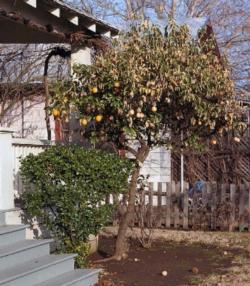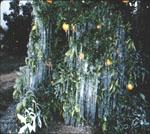Gardening Questions Answered
Citrus Freeze Protection
The weatherman is predicting freezing temperatures this week. How do I protect the tender plants in my garden, especially the citrus?

First try to determine exactly which climate zone you live in. The Sunset Western Gardener book have pretty good maps of our area. Our climate zones are 8 and 9 for the Central Valley and 7 in the foothills. The big difference between zones 8 and 9 is that 8 contains cold air basins and 9 is more temperate. Tender plants and citrus that thrive in zone 9 may not survive in zone 8. Make sure to buy plants that are suited for your climate zone.
We know that water freezes at 32 degrees. Plants are a bit different. Citrus does not usually suffer much damage unless there is a hard frost (defined as -29 degrees) for a sustained amount of time (usually longer than 4 hours).
Every garden contains its own microclimate and even its own cold air basins. The warmest spot is usually on the south side of the house or garage under an overhang. Plants that are frost-tender can be planted here or container plants should be moved to this area when frost is predicted. Lattices, lath structures and ovehanging branches will also provide some frost protection.
Shelters can be built, using 2x4's or stakes covered with a tarp or plastic. The material should not touch the leaves-this will cause the leaves to freeze. Deep irrigation will keep the ground warmer, since the soil rarely freezes in our zones, and that will create a warmer microclimate for the plants. Ourdoor lights or twinkle lights rated for outdoor use can add extra warmth. Cardboard boxes will help provide protection. Cut 3 sides of the top of a box to make a flap and can be opened during the day.
Don't be in a hurry to prune out frost-damaged wood. Wait until new growth appears in spring to cut out any dead wood. Mother Nature may surprise you with her resiliency.
UC Publication 8100: Frost Protection for Citrus and Other Subtropicals
UC California Backyard Orchard Citrus
